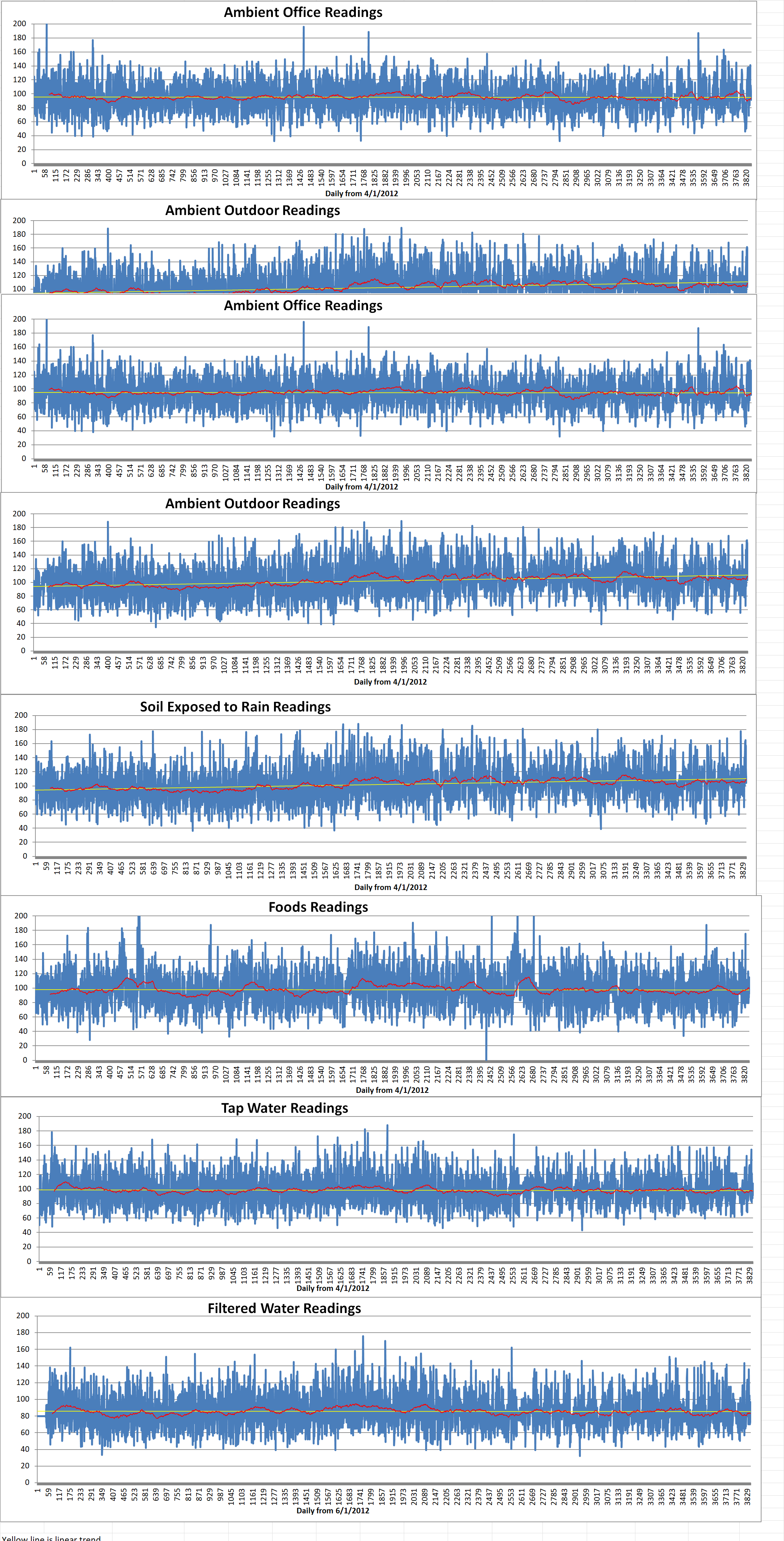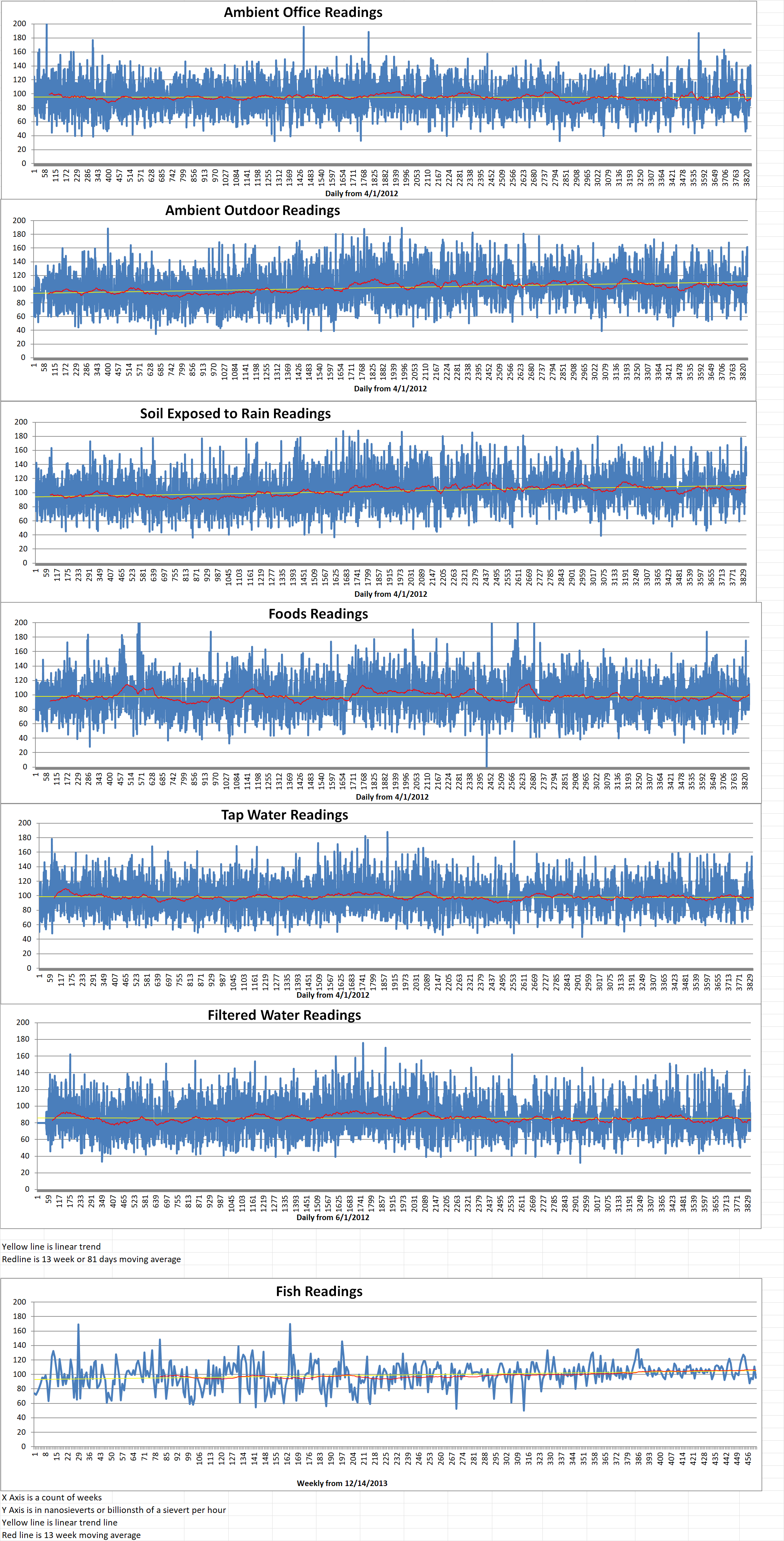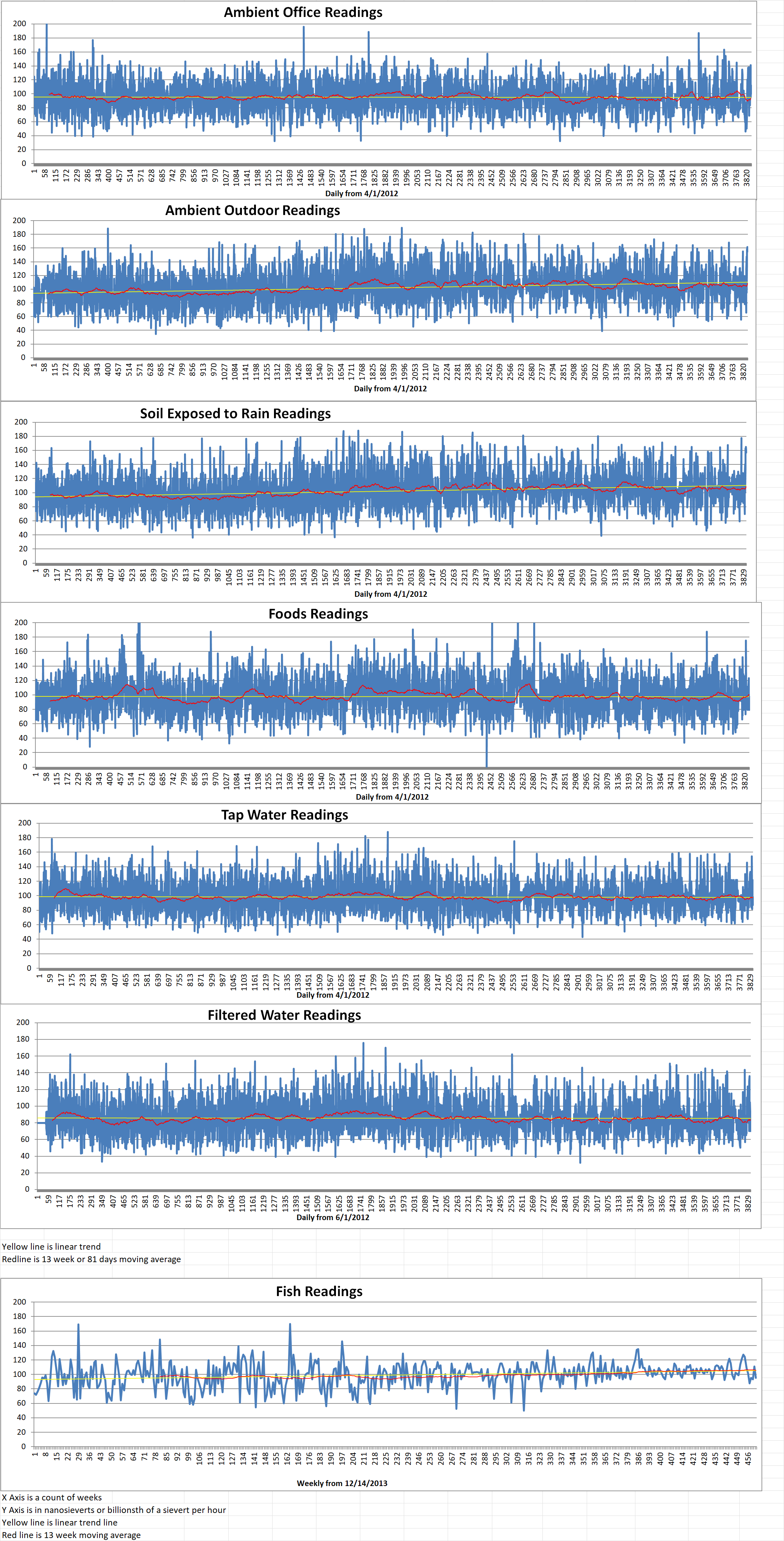Blog
-

Geiger Readings for Jan 11, 2023
Ambient office = 126 nanosieverts per hour
Ambient outside = 116 nanosieverts per hour
Soil exposed to rain water = 113 nanosieverts per hour
Blueberry from Central Market = 93 nanosieverts per hour
Tap water = 92 nanosieverts per hour
Filter water = 84 nanosieverts per hour
-

Nuclear Reactors 1119 – MIT Team Working On A Better Way To Test Components In Operational Nuclear Reactors – Part 1 of 2 Parts
Part 1 of 2 Parts
A new method has been discovered that could significantly reduce the time and expense of important safety checks in nuclear power reactors. This new approach could save money and increase total power output in the short run. In the long run, it might increase plants’ safe operating lifetimes.
Many analysts suggest that one of the most effective ways to control greenhouse gas emissions is to prolong the licenses lifetimes of existing nuclear power plants. However, extending these plants beyond their originally permitted operating lifetimes requires monitoring the condition of many of their critical components in order to ensure that damage from heat and radiation has not led or will not lead to unsafe cracking and embrittlement.
Stainless steel components of nuclear power reactors’ make up much of the plumbing systems that prevent heat buildup and many other parts. In order to test them, test pieces called coupons must be removed. These coupons are left adjacent to actual components containing the same kind of steel. In some cases, a tiny piece of the actual operating component must be removed. To apply either approach, the reactor must undergo an expensive shutdown. Testing prolongs scheduled outages and cost millions of dollars per day.
Researchers at MIT and elsewhere have come up with a new, cheap, hands-off test that can produce similar information about the condition of these reactor components. Far less time is required during a reactor shutdown. This research was reported today in the journal Acta Materiala in a paper by a MIT professor of nuclear science and engineering named Michael Short. Saleem Al Dajani who did his master degree work at MIT on this project and thirteen other researchers at MIT and other institutions also contributed.
The new testing technique involves aiming laser beams at the stainless steel material. This generates surface acoustic waves (SAWs) on the surface of the component. Another set of laser beams is then used to detect and measure the frequencies of these SAWs. Tests on materials aged identically to nuclear power plant components indicated that the waves produced a distinctive double-peaked spectral signature when the material was degraded.
Short and Dajani started on the new process in 2018. They were looking for a more rapid way to detect a specific king of degradation called spinodal decomposition. This degradation can occur in austenitic stainless steel (ASS). (ASS is one of the five crystalline forms of stainless steel.) ASS is used for components such as two-to-three-foot wide pipes that carry coolant water to and from the reactor core. This process can cause embrittlement, cracking, and potential failure in the event of an emergency. Spinodal decomposition is not the only type of degradation that can occur in reactor components. However, it is a primary concern for the lifetime and sustainability of nuclear reactors. Al Dajani said, “We were looking for a signal that can link material embrittlement with properties we can measure, that can be used to estimate lifetimes of structural materials.”
Short and Dajani decided to work on a technique that Short and his team had been developing called transient grating spectroscopy (TGS). They applied the technique on samples of reactor materials known to have experienced spinodal decomposition as a result of their reactor-like thermal aging history. The technique uses lasers beams to stimulate then measure SAWs on a material. The concept was that the decomposition should slow down the rate of heat flow through the material. The slowdown should be detectable by the TGS method.
Please read Part 2 next. -
Nuclear News Roundup Jan 10, 2023
Further cost refinements announced for first US SMR plant world-nuclear-news.org
Holtec debuts innovative decommissioning technology world-nuclear-news.org
Rolls-Royce seeks to progress mini nuclear plants by site visits uk.finance.yahoo.com
French power prices surge as outages plague nuclear reactors telegraph.co.uk
-

Geiger Readings for Jan 10, 2023
Ambient office = 91 nanosieverts per hour
Ambient outside = 103 nanosieverts per hour
Soil exposed to rain water = 104 nanosieverts per hour
Avocado from Central Market = 99 nanosieverts per hour
Tap water = 106 nanosieverts per hour
Filter water = 97 nanosieverts per hour
-

Nuclear Fusion 109 – German Physicists Improve Magnetic Confinement In Their Wendelstein 7-X Stellarator
Physicists in Germany at the Max Planck Institute for Plasma Physics recently found a way to minimize a major heat-loss problem plaguing a promising kind of nuclear fusion reactors called a “stellarator”.
Nuclear fusion takes place when the nuclei of two atoms merge into one. This releases a huge amount of energy. It is the process that power the Sun and other stars. If we could harness the power on nuclear fusion on Earth, it would mark a major advance in the battle against climate change.
Fusion does not produce any carbon emissions unlike burning fossil fuels. It also does not produce long-lasting radioactive waste unlike nuclear fission. Unlike solar and wind power, fusion does not depend on the weather.
Nuclear fusion can only take place under extreme heat and pressure. Nobel-winning physicist Pierre-Gilles de Gennes once remarked that recreating fusion on Earth would require scientist to put the “sun in a box.” Scientists have designed a variety of nuclear fusion reactors that can create the conditions needed for fusion. However, they require more energy than they produce. Until that changes, fusion will not be a viable source of power.
A stellarator is a type of nuclear fusion reactor that looks like a huge donut that has been squished and twisted out of shape. A coil of magnets surrounds the stellarator to create magnetic fields that control the flow of plasma inside it. By subjecting this plasma to extreme temperatures and pressure, a stellarator can force atoms within it to undergo fusion. Compared to other fusion reactors, stellarators consume less power and have more design flexibility.
However, the stellarator design makes it easier for the plasma to lose heat through a process called “neoclassical transport”. Without heat, you cannot have sustained fusion. Neoclassical transport is also called neoclassical diffusion. It is a type of diffusion seen in fusion power reactors that have a toroidal shape like a donut. It is a modification of classical diffusion. This adds in effects that are due to the geometry of the reactor that gives rise to new diffusion effects.
In classical transport, particles travel in helical paths around the lines of magnetic force. Particles collide and scatter which leads to some of them exiting the magnetic field and cooling the plasma. Neoclassical transport is created by the geometry of the reactor vessel. Because the magnetic fields are not uniform inside the donut, some particles wind up bouncing back and forth in what are called banana orbits. Some of them diffusion out of the magnetic fields, cooling the plasma.
Now, researches have reduced heat loss in the world’s biggest and most advanced stellarator, called the Wendelstein 7-X, by optimizing its magnetic coil. They were able to heat the interior of their nuclear fusion reactor to almost fifty-four million degrees Fahrenheit. That is more than twice as hot as the core of the sun. Testing confirmed that their design had specifically minimized heat loss due to neoclassical transport.
Novimir Pablant is a physicist working on the Wendelstein 7-X. He said “It’s really exciting news for fusion that this design has been successful. It clearly shows that this kind of optimization can be done.” -
Nuclear News Roundup Jan 09, 2023
Bill Gates visits West Virginia, considers building nuclear reactors wboy.com
Latin America, Caribbean Achieves Capability in Using Nuclear Techniques to Respond to Natural Disasters iaea.org
Michigan to hire outside firm to study state’s energy future wlns.com
Japan, US to step up cooperation in developing next-generation nuclear reactors asianews.network
-

Geiger Readings for Jan 09, 2023
Ambient office = 97 nanosieverts per hour
Ambient outside = 119 nanosieverts per hour
Soil exposed to rain water = 125 nanosieverts per hour
Apple from Central Market = 115 nanosieverts per hour
Tap water = 108 nanosieverts per hour
Filter water = 91 nanosieverts per hour
-
Nuclear News Roundup Jan 08, 2022
Russian hackers targeted U.S. nuclear scientists reuters.com
Nuclear energy sought in New York’s zero emissions push spectrumlocalnews.com
Iran says nuclear negotiations continuing through relevant channels englaish.news.cn
Hungary expects Paks II by 2032, plans fresh Paks operating extension world-nuclear-news.org
-

Geiger Readings for Jan 08, 2022
Ambient office = 100 nanosieverts per hour
Ambient outside = 155 nanosieverts per hour
Soil exposed to rain water = 157 nanosieverts per hour
Adara grape from Central Market = 87 nanosieverts per hour
Tap water = 98 nanosieverts per hour
Filter water = 73 nanosieverts per hour
